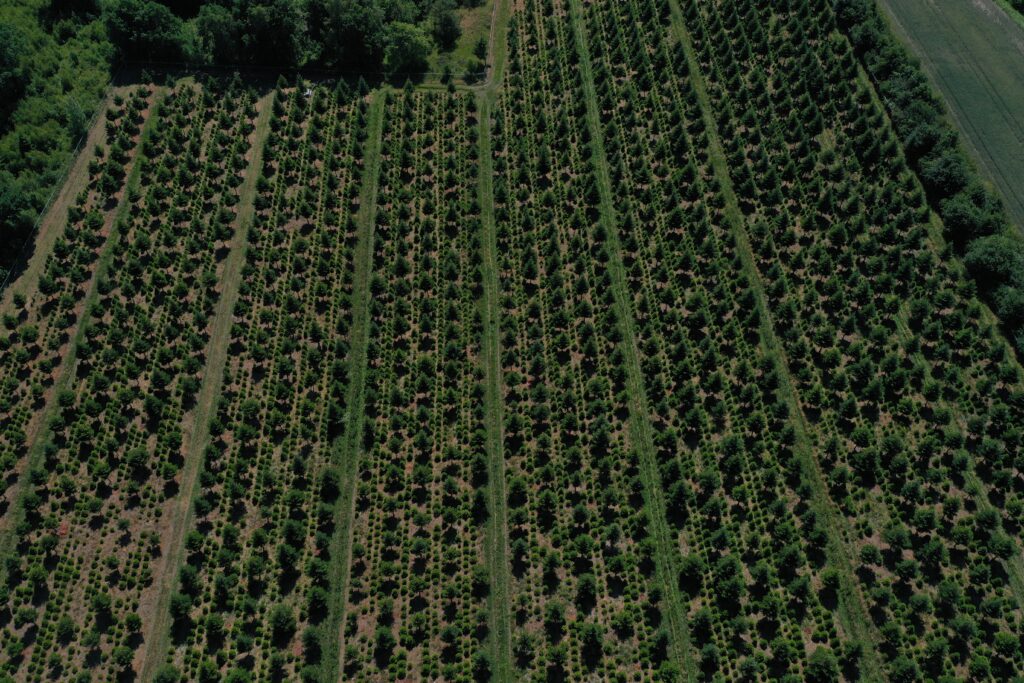Abies bornmülleriana has its natural distribution in northern Turkey on north-facing hillsides. In 1987, a 2 ha Christmas tree culture was planted with seedlings originating from Bolu-Kökez. In the culture, 80 plus trees were selected, which are grafted in the Norwegian Nature Agency’s seed plantation Kongsøre FP267.
On the basis of scoring and source data, 18 clones are then selected in FP267, which is established as Levinsen FP1005 Ry.
Progeny from Kongsøre FP267 has shown superior form and characteristics for Christmas tree production compared to all seed sources of Abies nordmanniana. Since the form of the progeny from Kongsøre FP267 is already top-notch and Abies bornmülleriana’s general Achilles heel is early emergence, the clones for this nursery have been selected according to the criteria of late emergence, slender trees and good needle density/hairiness, post-harvest quality (needle firmness).
All in all, you should expect a significantly better and very uniform average shape of the trees and average growth power, and hence also much less need for regulation and shaping. The trees also become slightly narrower and have a slightly later emergence than the offspring from Ambrolauri, Georgia. In the selection, emphasis is also placed on post-harvest quality and thus the risk of needle loss after felling is reduced.
Progeny trial set and monitored by Kbh. University across 4 locations in Denmark with very different soil types shows that this genetics is superior to trees grown from seeds from Ambrolauri regardless of location type. In this context, the value of a 1 ha cycle is documented to be 60% higher.

